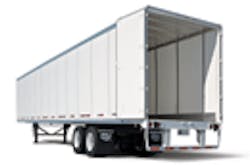Commercial trailer net orders stayed strong in July this year, according to data compiled by ACT Research Co., with orders up 74% over July 2009 – continuing a healthy rebound from what was one of the worst years in the commercial trailer industry, the firm said.
Though ACT noted that July’s 10,688 net orders for trailers represented a 9% decline from June of this year, the company believes nominal seasonality is the main reason for the drop. In fact, according to its information, the most recent six months of commercial trailer net orders are the best six-month span since the period ending February 2008.
Additionally, for the first time since 1998, the backlog of orders for the industry increased from June to July. ACT added that dry van trailers, the largest segment of commercial trailers, were up 134% year-over-year in July.
On top of that, demand for used trailers – both dry van and refrigerated units – has also definitely picked up over the past six months, especially for later model equipment, Kevin Nomina, used fleet manager for Wabash National, told Fleet Owner.
“We are also starting to see pricing rebound as well for the first time in nearly two years,” he added. “Supply is an issue. Customers seem to be keeping their equipment longer as trailers are being built of more durable material and lasting longer. Customers are not replacing their equipment as quickly as they once did.”
So while the decline in net orders for new trailers from June to July may appear disappointing, the overall direction of the commercial trailer sector continues to improve, stressed Kenny Vieth, partner and senior analyst with ACT.
“However, it should also be noted that these gains are coming off a very weak 2009 and, like the commercial truck sector, net orders have yet to reach normal replacement levels,” he said.
About the Author
Sean Kilcarr
Editor in Chief
Sean Kilcarr is a former longtime FleetOwner senior editor who wrote for the publication from 2000 to 2018. He served as editor-in-chief from 2017 to 2018.
